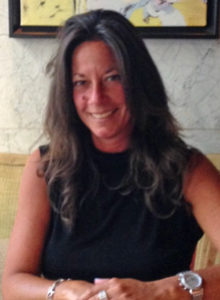Preparing school-age students with autism for the transition into post-secondary education is perhaps as challenging for teachers as it is daunting for parents. According to a National Autism Indicators Report, “Young adults with autism have a difficult time following high school for almost any outcome you choose – working, continuing school, living independently, socializing and participating in the community, and staying healthy and safe” (Roux et al., 2015).

Post-secondary options are varied and may include colleges and universities, career/technical schools, vocational/trade schools, campus transition programs, and day habilitation programs. These options look different from student to student and are based on needs and preferences. The unique language, social and behavioral characteristics associated with autism combined with insufficient funding for post-secondary education (and appropriate supports) make customizing programs solely based on an individual’s wants and needs practically impossible.
Regardless of the placement, it is critical to teach skills and provide supports that increase the likelihood of good outcomes. This can and should begin as early as preschool and throughout the school years by looking ahead. Parents as well as the child with autism (whenever possible) should think about where they would like to be in five, ten and even 15 years, and then teach accordingly (Gerhardt, 2018).
Designing and implementing instruction is dependent on staff and available resources (e.g., parental support, community access, monetary funds, etc.). Because there are significant changes in available resources in post-secondary education options, there is a critical need to fade supports (behavioral and personnel) and to increase student independence during the school age years. While the 1:1 staffing available for students with autism during the preschool and early childhood years is often essential for skill acquisition, it can become a hindrance to independence in the later years
Increased independence and fading of support staff can potentially lead to risk in the community. There are studies demonstrating that through the use of technology, individuals with autism can learn safety repertoires. Taylor, Hughes, and Richard (2004) taught teenagers with autism to respond to a vibrating pager when lost by going to the nearest adult and handing over a card requesting assistance. Other researchers taught individuals with autism to use mobile phones to get assistance when lost (Hoch, Taylor, & Rodriguez, 2009). The use of mobile applications (e.g., FaceTime, GPS, and Share My Location) is becoming increasingly common in programming for students with autism.
The notion of “natural supports” is frequently referenced in the context of using co-workers and managers as trainers for individuals with autism (Wehman, 2001). The concept of natural supports can also be referenced in the context of using teachers/instructors. Selecting the teacher / instructor that is the best match for the student will lead to better outcomes. Such teachers will take time to break down tasks, make modifications to assignments, adjust expectations, and allow partial participation. Lastly, the notion of natural supports can also be applied to teaching the easiest, most efficient way to accomplish a task. For example, when teaching shopping and meal preparation, food delivery services like Instacart and HelloFresh can be appropriate. The goal is to teach the student to do the skill without reminders and assistance from teachers or parents.
There are technical skills needed for successful participation in all post-secondary education options. For example, an academic skill is writing (your name or an essay), a social skill is greeting people (verbally or with a gesture), and a vocational skill is completing a task (sorting or filing). These are concrete skills that many students can learn; some more quickly than others. But these types of skills are the least of our worries. The “softer skills,” or perhaps some of those intangible, seemingly difficult to quantify skills, are the ones that interfere with success for many students. Examples of such skills include, but are not limited to, interpersonal skills, work ethic, adaptability, dependability, cooperation, and problem solving. Once learned, these essential skills can be generalized across all environments (e.g., work, home, school, community), across all post-secondary education options, and can be utilized throughout the lifespan.
Below is an inventory of objectives that must be prioritized when preparing students for the transition to post-secondary education. This list is by no means exhaustive but is meant to provide suggestions and ideas.
Dependability and Accountability
- Follows a written schedule
- Inserts upcoming events/activities/tasks into digital calendar
- Makes and follows a to-do list (e.g., on phone, computer, paper)
- Meets deadlines / submits work on time
- Regularly checks and responds to texts, voicemails, and emails
Works Independently
- Remains engaged in activities and on task for increasing amounts of time
- Discriminates between when to work independently and when to depend on support (e.g., when receiving 1:1 support from a service provider). During independent work time, it may be appropriate to reach out to natural supports (e.g., teacher, peer)
Well-Being / Self-Manages Stress
- Exercises regularly
- Eats a well-balanced diet
- Gets a good night’s sleep
- Initiates and uses a problem-solving/coping strategy (e.g., thought log, deep breathing, meditation app) to determine a solution for a concern
- Discriminates where and when certain behaviors are okay and not okay (e.g., okay to engage in self talk/non-contextual video scripting when alone, not okay when in the presence of others)
Manages Downtime
- Makes use of free time (e.g., studies, engages in novel activities, interacts with peers, joins a club / team, etc.)
- Increases repertoire of preferred activities, beyond iPad and apps
- Manages time before appointments (e.g., arrive on time to meetings, school, work, and other obligations.). If early, remains appropriately engaged without interrupting others
Social Awareness and Cooperation
- Analyzes a prior social situation and suggests things that could be done differently next time
- Makes and maintains friendships (e.g., sets and follows through with social plans with peers)
- Manages expectations. Understands when partial participation (e.g., observation) in a task is sufficient versus times when active engagement (e.g., responses and initiations) is required
- Works on projects with others
Leadership / Community Service
- Organizes an event or activity (e.g., clothing drive, inclusion dance)
- Volunteers or gives back to the community (e.g., delivers Meals on Wheels)
Makes a Good Impression
- Wears appropriate attire for the occasion / situation
- Maintains personal hygiene
- Keeps personal belongings and work spaces clean and organized
- Arrives prepared
Advocacy
- Communicates needs and wants
- Seeks assistance / support
- Makes choices (e.g., selects classes and activities based on interests and preferences)
- Understands characteristics of autism and disclosure (by describing it to others). Makes decisions whether or not to disclose disability and identifies the pros and cons of disclosing in specific scenarios.
Whether the next environment after school is college, technical school, transition program or day habilitation, planning ahead and prioritizing skills that occur across multiple settings can ease the transition and lead to better outcomes.
Randy Horowitz, MSEd, SAS, is Associate Executive Director for Educational and Adult Services at Eden II. Any questions about the content of the article or the subject in general can be directed to Randy Horowitz at rhorowitz@eden2.org. Learn more about Eden II at www.eden2.org.
References
Anderson, Stephenson, & Carter. (2017). A systematic literature review of the experiences and supports of students with autism spectrum disorder in post-secondary education. Research in Autism Spectrum Disorders, 39, 33-53.
Cameto, R., Levine, P., Wagner, M. (2004). Transition planning for students with disabilities: A special topic report from the National Longitudinal Transition Study-2 (NLTS2). Menlo Park, CA: SRI International.
Gerhardt, P.F. (2018). Webinar Title; “Transition to Adulthood with Peter Gerhardt, PhD”. OAR. https://researchautism.org/transition-to-adulthood-webinar/
Gerhardt, P.F. (2009). The current state of services for adults with autism. Arlington, VA: Organization for Autism Research.
Hoch H, Taylor B.A, Rodriguez A. Teaching teenagers with autism to answer cell phones and seek assistance when lost. Behavior Analysis in Practice. 2009;2:14–20.
Organization for Autism Research (2021). A Guide for Transition To Adulthood. https://researchautism.org/resources/a-guide-for-transition-to-adulthood/
Roux, Anne M., Shattuck, Paul T., Rast, Jessica E., Rava, Julianna A., and Anderson, Kristy, A. National Autism Indicator Report: Transition into Young Adulthood, Philadelphia, PA: Life Course Outcomes Research Program, A.J. Drexel Autism Institute, Drexel University, 2015
Taylor, B. A., Hughes, C. E., Richard, C. E., Hoch, H., Coello, R. A., & Coello, (2004). Teaching teenagers with autism to seek assistance when lost. Journal of Applied Behavior Analysis, 37, 79–82.
Wagner, M., Newman, L., Cameto, R., Levine, P., Marder, C. (2007). Perceptions and expectations of youth with disabilities. A special topic report of findings from the National Longitudinal Transition Study-2 (NLTS2) (NCSER 2007-3006). Washington, DC: National Center for Special Education Research.
Wehman, (2001). Life beyond the classroom: Transition strategies for young people with disabilities, Third Edition, P.H Brookes Publishers, Baltimore.
Wehman, P., Smith, M., Schall, C. (2009). Autism and the transition to adulthood: Success beyond the classroom. Baltimore, MD: Brookes.
VanBergeijk, E., Klin, A., & Volkmar, F. (2008). Supporting More Able Students on the Autism Spectrum: College and Beyond. Journal Of Autism & Developmental Disorders, 38(7), 1359-1370





